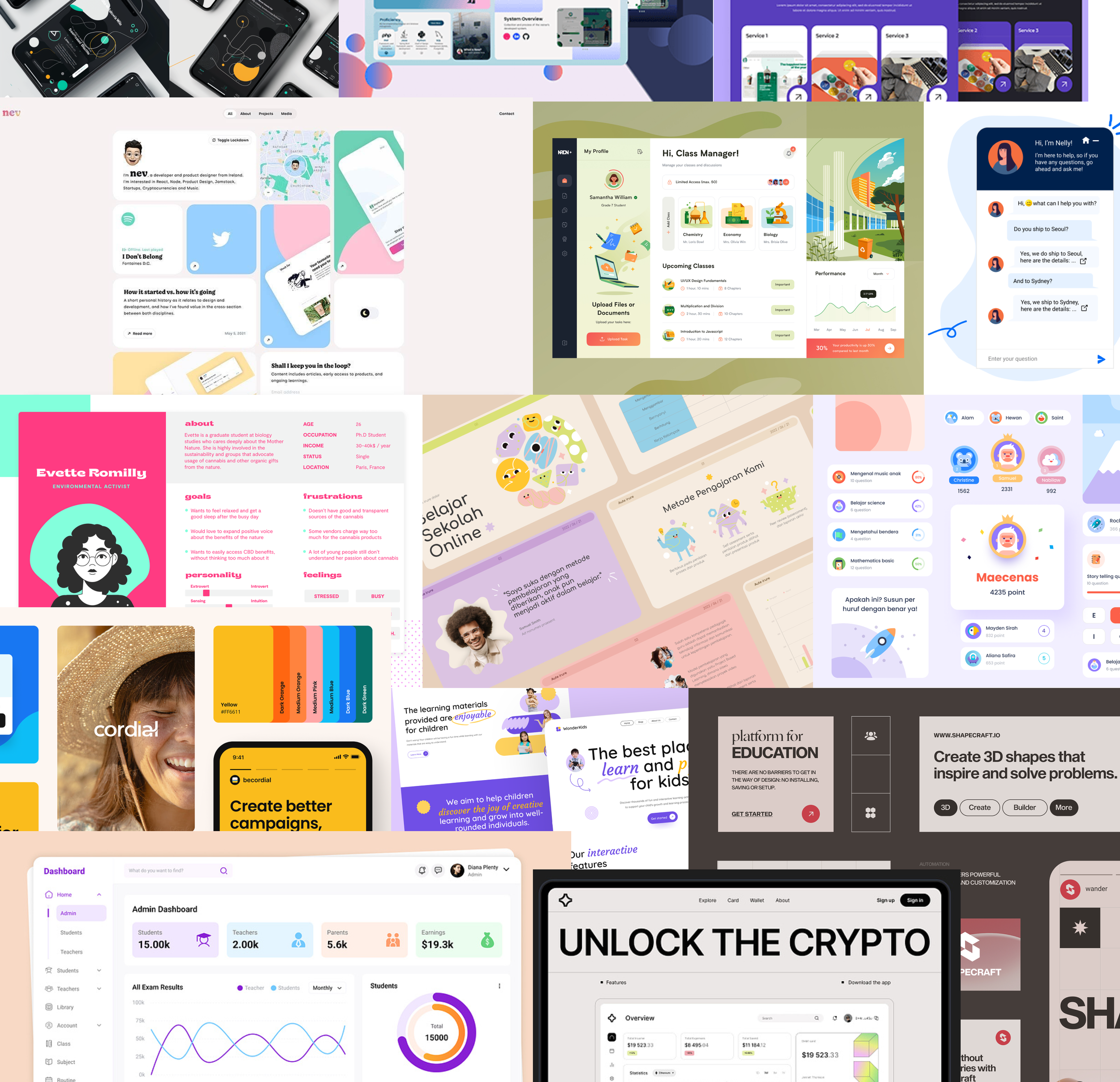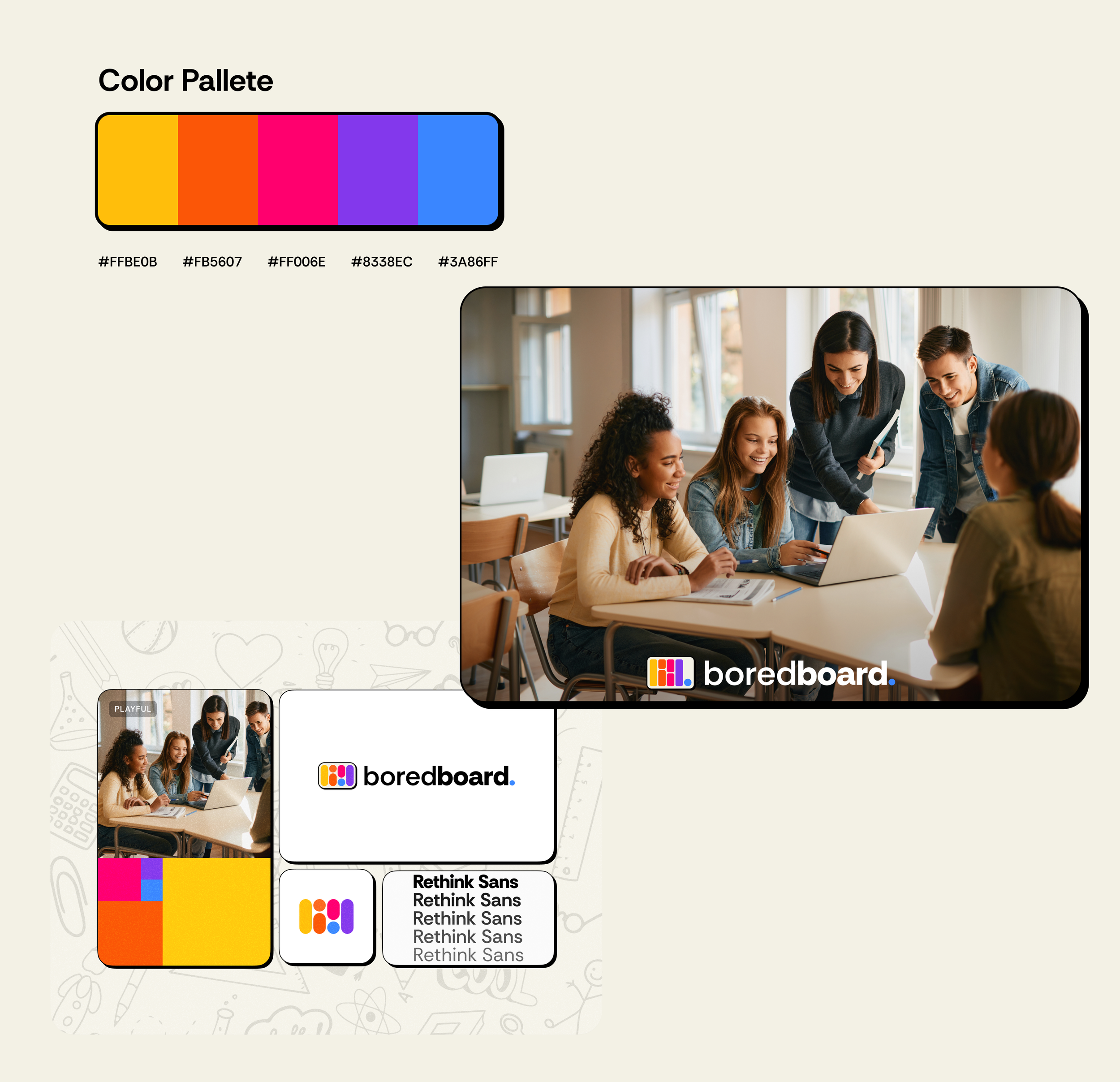boredboard.
An AI-powered web application crafted to enhance the high school learning experience.
This project is part of the AWS - Partyrock Generative AI Hackathon. We focused on designing platforms for real people and their needs leveraging PartyRock as a platform to create use cases for this technology.
Checkout our devpost submission!
TEAM: Gabriel Gutierrez & Shrey Patel
TOOLS: PartyRock, Figma
Sneak Peek into our design process!
Hackathon Prompt + Requirements
WHAT TO CREATE
1. Create or Remix a PartyRock app to fit into one of the following categories:
Interactive Learning Experience - virtual science lab, language lesson, etc;
Creative Assistant - music composition assistance, story idea generator, etc;
Experimental Entertainment - interactive story, Role Playing Games, etc;
Freestyle - any project that doesn’t fall into one of the categories above.
AND/OR
2. Remix Side Quest: Remix THIS community-created ChatRPG app to creatively transform it into something as far from the original as possible
DISCOVER
Based on the prompt, my team and I initiated the process of understanding the PartyRock by testing its image generation and location based capabilities and the logic flow.
What are some areas of challenges that AI can solve?
Our guiding question for brainstorming:
Our conclusions from initial ideation:
Need for personalized platform just for students
Solution has to tackle 3 main issues: depersonalization, information overload, shorter attention span
After our brainstorming session, we created a moodboard and drew inspiration to craft our branding. We wanted our branding to be clean, playful & contrast.

Mood Board for Inspiration

Branding
DEFINE
We created user personas of two high school students with pain points that would be solved through our solution. To understand them better, user journey maps were also created. One happy path and one edge case journey maps helped us iterate our party rock logic.
Usability Testing
Using our fictional personas, we conducted usability testing. Assigning the personas to our friends, Lucas was assigned a moderated usability task and Sara was assigned an un-moderated usability task.
We prompted Lucas to use the party rock logic to achieve his goal of understanding history concepts and find scholarships in the STEM field. Lucas was instructed on how to navigate party rock. Lucas was successfully able to finish his tasks.
As for Sara, her task was to find local tutoring locations and study for her physics exam. Sara was successfully able to learn physics concepts but finding tutoring locations was unsuccessful.
Observations
DEVELOP
With insights gained from usability testing, we iterated on the PartyRock logic, refining it from six initial inputs to four, incorporating numerous small adjustments that significantly improved user experience.
Using the PartyRock and our moodboard as inspirations, we developed a high-fidelity mockup of boredboard as a platform.
What did we learn? What are we proud of?
We learned the importance of adaptability, collaboration and user feedback in creating effective solutions. Designing a personalized dashboard, interactive learning modules, and integration of other features for students in 4 simple steps by tackling challenges of having a platform that addresses information overload, lower attention span and depersonalization.
Checkout the video to see how boredboard works!



















